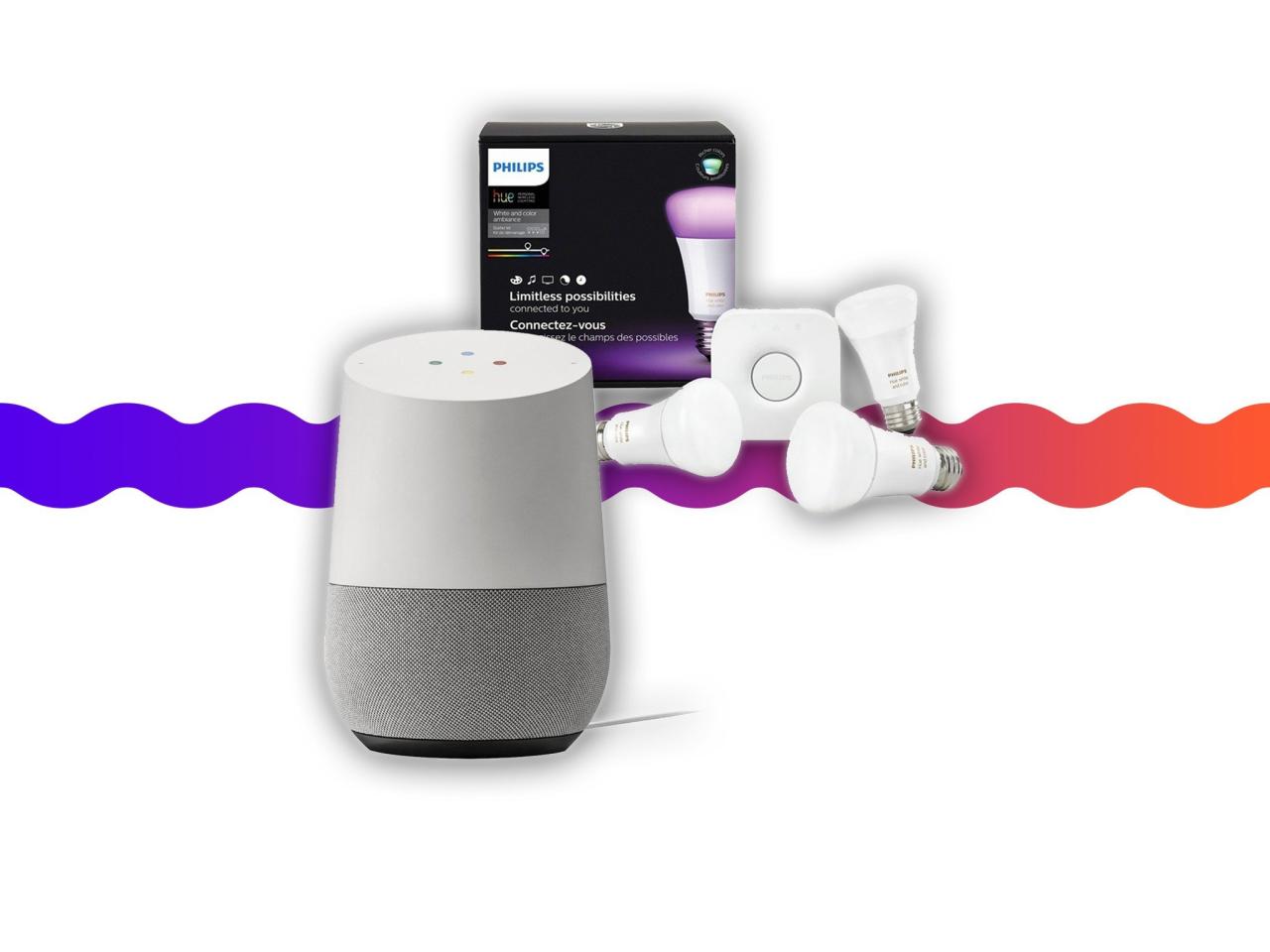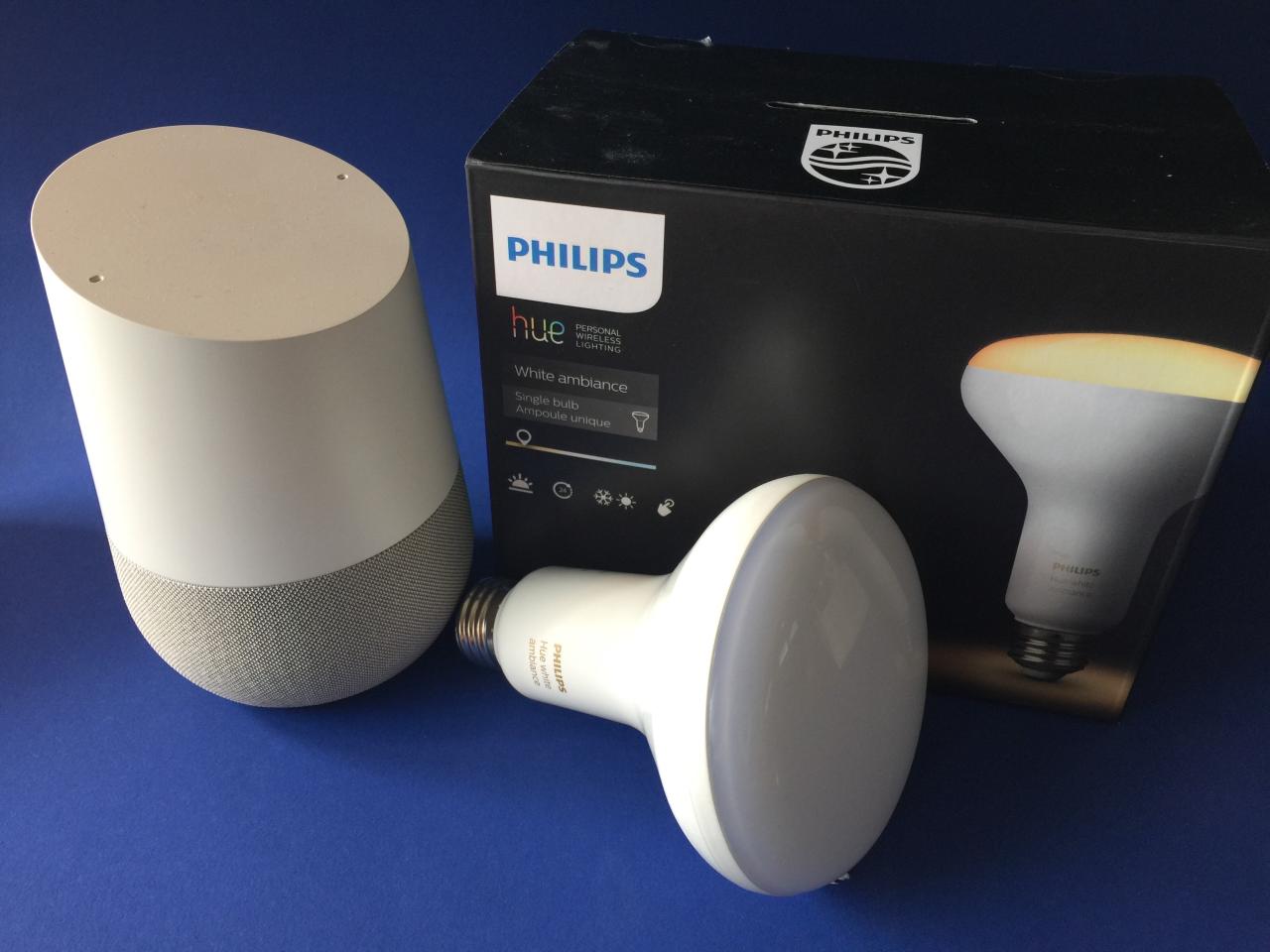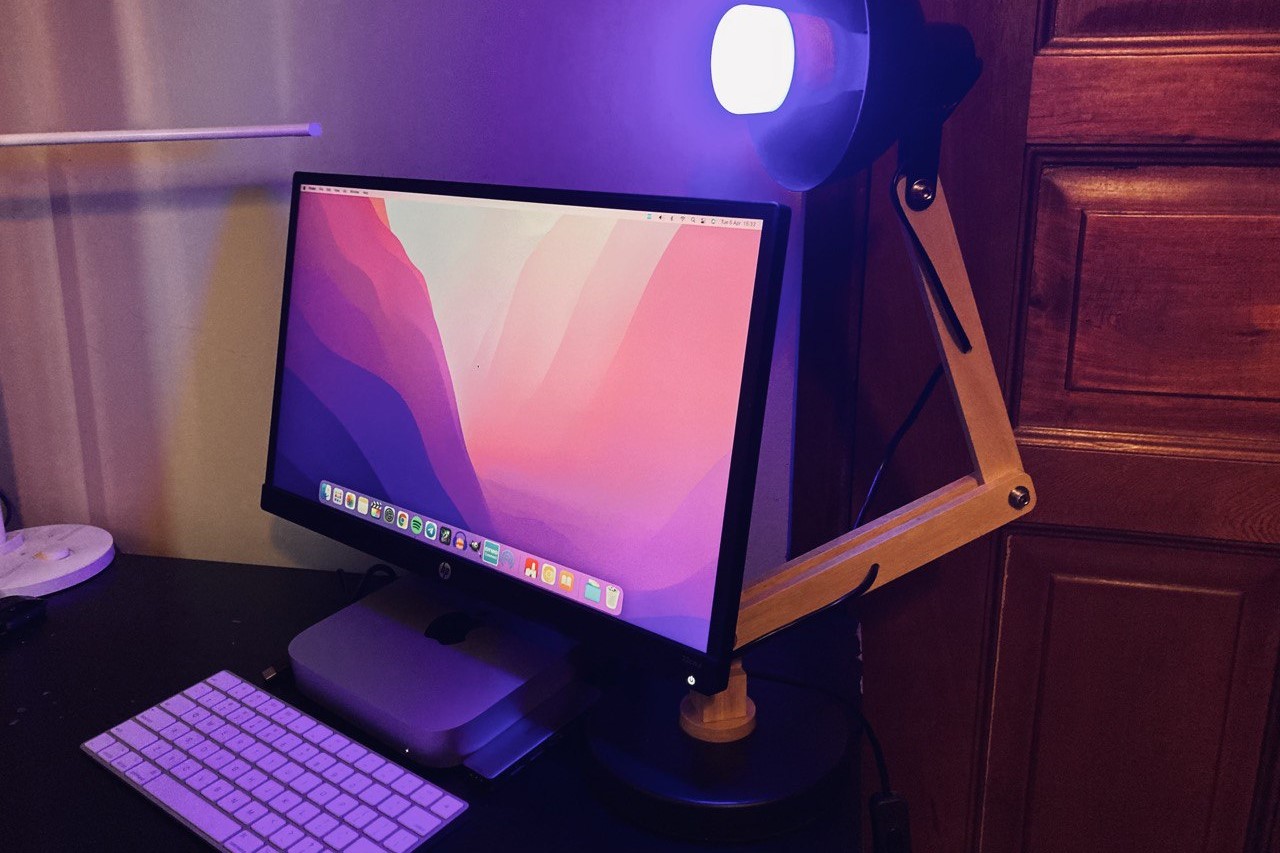Philips Hue Google Home brings the magic of smart lighting into your living space, transforming the way we interact with illumination. With a plethora of features, these advanced bulbs not only adapt to your preferences but also seamlessly integrate with your Google Home, creating an effortless ambiance at your command.
From a variety of bulb types catering to distinct needs, to the ability to control lighting with simple voice commands, Philips Hue offers a unique blend of functionality and convenience. Whether it’s setting the mood for a movie night or scheduling lights to turn on at dawn, the synergy between Philips Hue and Google Home enhances your smart home experience like never before.
Philips Hue Overview
Philips Hue represents a leading brand in the smart lighting market, offering an extensive range of products and features aimed at enhancing both functionality and ambience in homes. With the ability to customize lighting solutions easily, Philips Hue has garnered popularity among smart home enthusiasts. Its compatibility with various devices and platforms further solidifies its status as a go-to choice for intelligent lighting systems.
The primary features of Philips Hue include color-changing capabilities, smart control via mobile apps, and voice commands through smart assistants. Users can create personalized lighting scenes that suit different occasions, from brightening a workspace to setting a relaxing mood for a movie night. The Philips Hue system also supports automation and scheduling, allowing lights to turn on or off at specific times or in response to certain triggers.
Types of Philips Hue Bulbs and Their Uses
Philips Hue offers a diverse selection of bulbs designed to meet various lighting needs throughout a home. Understanding the distinct types and their applications is essential for maximizing their benefits.
- Hue White Bulbs: These bulbs provide warm white light and are ideal for basic lighting requirements. They are perfect for areas where simple illumination is needed, such as hallways or kitchens.
- Hue White Ambiance Bulbs: These bulbs offer adjustable white light tones, ranging from cool to warm. They are suitable for spaces where different lighting moods are desired, such as living rooms or bedrooms.
- Hue Color Ambiance Bulbs: These versatile bulbs allow users to select from millions of colors. They are perfect for creating vibrant atmospheres for parties, celebrations, or themed activities.
- Hue Lightstrip: This flexible lighting solution can be placed in various settings, including under cabinets or along shelves. Lightstrips can create a unique visual effect and add depth to any room.
- Hue Play and Hue Bloom: Designed for accent lighting, these products create ambient light behind televisions or in corners, enhancing the overall room experience.
Compatibility with Smart Home Devices
Philips Hue lights are designed to integrate seamlessly with numerous smart home platforms and devices, making them an ideal choice for those looking to enhance their home automation setup. The system works with popular smart assistants such as Google Assistant, Amazon Alexa, and Apple HomeKit.
The compatibility of Philips Hue includes:
- Smart Speakers: Users can control Philips Hue lights through voice commands, enabling hands-free operation for convenience.
- Smart Hubs: Philips Hue is compatible with hubs like Samsung SmartThings, allowing for broader control alongside other smart devices.
- Home Automation Systems: The lights can be integrated into comprehensive automation routines, such as syncing lights with security systems or thermostats to create a cohesive smart home environment.
- Third-party Apps: Philips Hue works with various third-party applications, expanding functionality and customization options beyond the official Hue app.
Philips Hue lights serve as a cornerstone of modern smart home solutions, providing versatility, convenience, and a personalized lighting experience.
Integration with Google Home

Integrating Philips Hue with Google Home enhances the smart home experience, allowing users to control their lighting effortlessly with voice commands. This seamless integration empowers homeowners to create personalized environments, adjust lighting to suit their mood, and automate routines, all through a single voice-activated hub.
Steps to Integrate Philips Hue with Google Home
To connect Philips Hue with Google Home, users need to follow a series of straightforward steps. This integration process ensures that your smart lighting is directly controllable via Google Assistant, enhancing convenience and efficiency in your daily life.
- Ensure that your Philips Hue lights and the Google Home device are connected to the same Wi-Fi network.
- Open the Google Home app on your smartphone or tablet.
- Tap on the “+” icon at the top left corner of the screen to add a device.
- Select “Set up device” and then choose “Have something already set up?”
- Search for and select “Philips Hue” from the list of compatible devices.
- Log in to your Philips Hue account when prompted to link the accounts.
- Once linked, you can assign your Hue lights to rooms within the Google Home app for easier control.
- Test the integration by using voice commands to control your lights through Google Assistant.
Voice Commands for Controlling Philips Hue Lights, Philips hue google home
The integration of Philips Hue with Google Home allows for a variety of voice commands, making the control of lighting both intuitive and efficient. Here are some common commands that can be utilized:
“Hey Google, turn on the living room lights.”
“Hey Google, set the bedroom lights to 50% brightness.”
“Hey Google, change the kitchen lights to blue.”
“Hey Google, turn off all the lights.”
“Hey Google, dim the lights in the hallway.”
These commands grant users the ability to adjust lighting easily without having to manually operate switches or mobile applications, adding a layer of convenience to daily routines.
Benefits of Using Philips Hue with Google Home for Smart Home Setup
Integrating Philips Hue lights into a Google Home setup provides numerous benefits that enhance the overall smart home experience. The advantages of this combination include:
- Enhanced Convenience: Voice control eliminates the need for physical switches, allowing users to adjust lighting hands-free.
- Customization: Users can create specific lighting scenes tailored to activities such as movie nights, reading, or entertaining.
- Automation: Philips Hue can be programmed to follow routines, such as turning on lights at sunset or dimming them at bedtime.
- Energy Efficiency: Smart lighting can help reduce energy consumption by enabling users to turn off lights remotely or set schedules.
- Interconnectivity: Philips Hue lights can integrate with other smart devices managed by Google Home, creating a cohesive smart home ecosystem.
The synergy between Philips Hue and Google Home creates a smart lighting solution that is not only user-friendly but also significantly enhances the functionality and efficiency of modern home environments.
Automation and Routines

The automation capabilities of Philips Hue lights combined with Google Home integration provide users with a powerful way to enhance their smart home experience. By setting up automation and routines, homeowners can create personalized lighting scenarios that adapt to their daily activities and preferences. This guide will delve into the process of configuring these features to maximize convenience and efficiency.
Setting Up Automation Routines for Philips Hue Lights
Establishing automation routines for Philips Hue lights is a straightforward process within the Google Home app. This functionality allows users to control their lights based on specific triggers such as time of day, other device actions, or even voice commands.
To set up automation routines, follow these steps:
1. Open the Google Home app on your smartphone.
2. Tap on the “Routines” option in the settings menu.
3. Select “Add a Routine” to start creating a new automation.
4. Choose a trigger for your routine, such as a specific time or a voice command.
5. Under “Actions,” select “Add action” and choose “Adjust lights, plugs, and more.”
6. Choose your Philips Hue lights and specify the desired action, such as turning on, off, or changing colors.
7. Save your routine.
This method allows users to create tailored lighting setups that respond to their lifestyle needs without manual adjustment.
Scheduling Philips Hue Lighting through Google Home
The scheduling feature in Google Home enables users to set specific times for their Philips Hue lights to operate. This can be particularly useful for simulating presence when away from home or for ensuring lights turn on or off at regular intervals.
The options for scheduling include:
– Fixed Time Scheduling: Users can set specific times for lights to turn on or off each day. For example, you can schedule the living room lights to turn on at sunset (around 6 PM).
– Sunrise/Sunset Triggers: Automate lights to respond to natural light changes. For instance, lights can be set to gradually brighten at sunrise to mimic the natural waking process.
– Weekly Routines: Create routines that apply to specific days of the week. For example, turning on the garden lights on Friday and Saturday evenings for outdoor gatherings.
Utilizing these scheduling options not only enhances convenience but also optimizes energy usage by ensuring lights are only on when needed.
Customizing Lighting Scenes for Different Times of the Day
Customizing lighting scenes allows users to create ambiance suited for various activities and times of the day. Google Home facilitates this by enabling users to program specific light colors and intensities as part of their routines.
Important steps for customizing scenes include:
– Morning Brightness: Set the kitchen lights to a bright white hue to encourage alertness as part of your morning routine, transitioning gradually to warmer tones as the day progresses.
– Relaxation Mode: Designate a soft, warm lighting scene for the evenings to promote relaxation. This can be set to activate at a specific time, such as 8 PM.
– Movie Night Scenario: Create a dimmed, cool lighting scene for movie nights. This could involve lowering the brightness of the living room lights and activating colored accents around the room.
By leveraging Google Home’s scene settings, users can ensure their living spaces are not only functional but also comfortable and inviting, tailored to their daily rhythms.
Troubleshooting Common Issues: Philips Hue Google Home

The integration of Philips Hue lights with Google Home can greatly enhance your smart home experience. However, connectivity issues can arise, hindering the seamless operation of your lights. Understanding common problems and their solutions can help you maintain a fully functional smart lighting system.
Common Connection Issues and Solutions
Several issues may prevent Philips Hue lights from properly connecting with Google Home. Below is a list of frequent problems along with practical solutions to resolve them.
- Wi-Fi Connectivity Issues: If your Philips Hue Bridge is not connected to the same Wi-Fi network as your Google Home device, it can cause connectivity issues. Ensure both devices are connected to the same network.
- Bridge Unresponsive: Sometimes, the Hue Bridge may become unresponsive. Try power cycling the bridge by unplugging it for 10 seconds and then plugging it back in.
- Outdated Firmware: Ensure that both the Philips Hue Bridge and the Google Home app are updated to the latest firmware and software versions. Check for updates in the respective apps.
- Google Home App Permissions: Confirm that the Google Home app has the necessary permissions to access your Philips Hue lights. Navigate to the app settings on your mobile device to grant permissions.
- Account Linking Issues: If your Philips Hue account is not properly linked to Google Home, you may need to unlink and then re-link the account through the Google Home app. This often resolves persistent connectivity issues.
Resetting Philips Hue Lights
If you encounter persistent issues with your Philips Hue lights, resetting them can be a straightforward solution.
To reset your Philips Hue lights, follow these steps:
1. Make sure the light is powered on.
2. Use the Hue Dimmer Switch, if available, and hold the “On” button for approximately 10 seconds until the light flashes, indicating that it has been reset.
3. If you do not have a dimmer switch, you may need to reset the lights physically by turning them off and on six times consecutively until they flash.
After resetting, re-establish the connection with Google Home by using the Google Home app to search for new devices. This process allows for a fresh start and often resolves lingering issues.
Optimizing Performance of Philips Hue Lights
To enhance the performance of your Philips Hue lights when working with Google Home, consider the following tips:
- Placement of the Hue Bridge: Position the Hue Bridge centrally within your home to ensure optimal signal strength for all connected lights.
- Reduce Network Interference: Keep your Wi-Fi network interference-free by minimizing the number of devices connected to the same network. This can improve communication between your Hue lights and Google Home.
- Regular Firmware Updates: Regularly check for updates for both the Philips Hue Bridge and the Google Home app to benefit from performance improvements and bug fixes.
- Utilize Routines Wisely: Set up routines in the Google Home app to automate your lights based on your schedule, which can reduce manual control and increase efficiency.
- Monitor Power Supply: Ensure that all smart lights are plugged into a reliable power source, as power outages or fluctuations can disrupt connections.
Questions and Answers
What types of Philips Hue bulbs are available?
Philips Hue offers various types including A19, BR30, light strips, and outdoor bulbs, each designed for specific lighting needs.
Can I control Philips Hue lights away from home?
Yes, with the Philips Hue app and a stable internet connection, you can control your lights remotely from anywhere.
Are Philips Hue lights compatible with Apple HomeKit?
Yes, Philips Hue lights are compatible with Apple HomeKit, allowing control via Siri and integration with other Apple smart devices.
How many Philips Hue lights can I control with Google Home?
You can control up to 50 Philips Hue lights with a single Google Home setup.
Do Philips Hue lights require a hub?
Yes, a Philips Hue Bridge is required to connect and control the lights via Google Home or the Philips Hue app.
If you’re looking to enhance your smart home experience, integrating Philips Hue with Siri could be the perfect solution. With just your voice, you can control your lighting, set the mood, and automate routines effortlessly. This seamless connection not only provides convenience but also elevates the ambiance of your space, making it feel more personalized and smart.
For those who prefer a cohesive smart home system, combining Philips Hue with Apple HomeKit is invaluable. This integration allows you to control your Philips Hue lights alongside other smart devices using the Home app or Siri, creating a synchronized environment that adapts to your lifestyle. Embrace the future of home automation and discover the endless possibilities it offers.